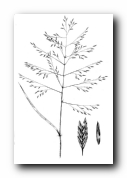
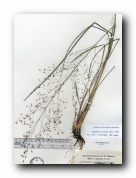
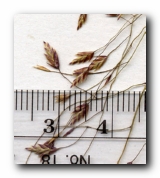
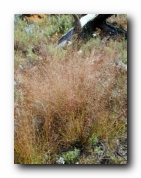
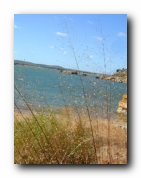
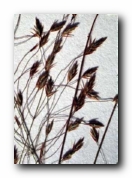
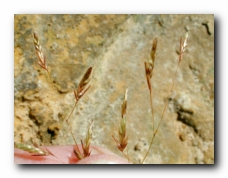
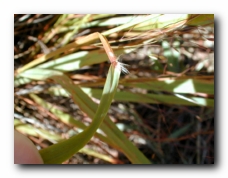
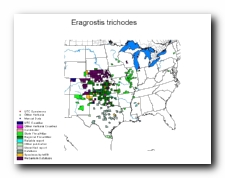
40" Rows:
Broadcast:
0.5 pound pure live seed per acre
1.5 pounds pure live seed per acre
Loam:
Clay:
High
Moderate
Low
Habit: Tufted perennial.
Culm: Erect, 60-150 cm. tall, tufted, simple, lower internodes very short,
uppermost very large.
Blade: 15-90 cm. long, 2-6 mm. wide, flat, drawn out into a taper point,
rough above.
Sheath: Overlapping, smooth, pilose at the throat and sometimes on the
upper half.
Ligule: A dense ring of short hairs.
Inflorescence: Panicle often purplish, usually exserted, diffuse, oblong, usually
about half the height of the plant, axis rigid and somewhat scabrous,
lower axils sometimes pilose, the scabrous capillary branches erect
or ascending, naked below, the flexuous scabrous pedicels 2-several
times as long as the spikelets.
Spikelets: Usually pale, 4-6-(3-10)-flowered, 3-9 mm. long, numerous.
Glumes: Acute, 2-4 mm. long, the second slightly longer, scabrous on the
keel and sometimes sparsely so on the body.
Lemmas: Acute, the lower 2.5-3 mm. long, somewhat flattened, evidently
3-nerved, scabrous on the keel.
Palea: About as long as its lemma, prominently 2-nerved and ciliate on
the 2-keels.
Anthers: A little over 1 mm. long.
Fruit: Grain 1 mm. long, minutely pitted.
Habitat: Sandy soil in barrens and open sandy woods. August-October.
Remarks: When in flower adding a hazy effect to hillsides.
Synonyms: Eragrostis pilifera Scheele
Eragrostis trichodes (Nutt.) Wood var. pilifera (Scheele) Fern
Special Notes:
Sand Lovegrass [Eragrostis trichodes] Information #2
Sand Lovegrass [Eragrostis trichodes] Information #3